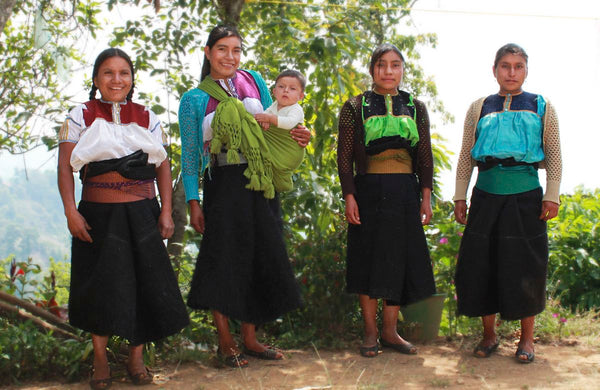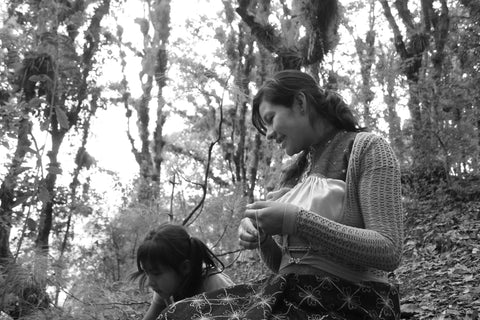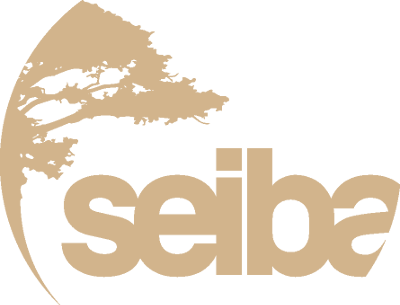Meet the Chamula of Chiapas

High up in the lush mountains near San Cristobal, Mexico, reside over 148 vibrant indigenous communities. In the native Tzotzil language, it is also referred to as Joven meaning, “the place in the clouds.” Through our travels, we had the honor of meeting several amazing women from of the Revolucion and Bach’en communities. These talented women spend most of their days handcrafting everything from clothing to a variety of goods.
Clothing types and colors distinguish each and every community, and variations in shades are not necessarily stylistic choices, but rather are used to distinguish the subtle differences in origin. Their distinctive thick woolen skirts are handmade over a period of 3 months, and each woman typically wears just one for most of her life. The weave we feature is designed by the artisans and is an intricate hand-knotted pattern that requires both time and patience, and, depending upon the product, can take up to two days to complete.


The men are hard-working and usually spend their days tending to the crops and livestock. Sheep and cows are vital, as the communities rely upon them for both clothing as well as food. Their diet consists primarily of the vegetables that they grow themselves (corn, beans, flour, and radish), and any uneaten crops are sold in the local markets. As both the men and women work, it is often the responsibility of the children to take care of their younger siblings. Their homes are mud structures housing both the immediate and extended family.
Problems the Communities Face
Disappearing Culture: The indigenous communities residing in Chiapas are just one of many indigenous cultures worldwide that face uncertain futures. Indigenous communities form the largest minority in the world and are often the most impoverished. Their culture and traditions are slowly being lost due to modernization, environmental changes, and lack of opportunities that force relocation. Their traditional ways of life, language, and beliefs that have existed for centuries are threatened and will soon disappear if not acknowledged and protected.
Seasonal Climate issues: Food resources are very scarce in Chiapas. During the brutal winter months of November, December, and January, the cold weather and icy frost often destroy their crops. During the warmer seasons, the threat of drought is ever-present. While beautiful, the remote locations high in the mountains make it difficult to obtain any food supplies that they do not grow themselves.
Education: There are public middle schools in the neighboring communities that the children attend. Education is mandatory up to middle school; however, many of the children do not attend high school because of transportation difficulties and cost. There are very few high schools available, and most are located in far away cities. These high schools are also typically private and expensive.

Each product is unique and handcrafted with care.
Their native tongue, Tzotzil, is only recognized and spoken within their communities. Since the Mexican government provides the public schools, all the learning materials are in Spanish. As such, their native language is slowly disappearing along with other traditional ways of life.
Health: The government provides limited medical assistance, but it is not able to cover the range of problems the communities face. Any surgical procedures or specialized treatment is not covered, meaning the community members are forced to seek private care, which is difficult to find and expensive.
Infrastructure and Sanitation: The indigenous communities often do not have proper watering systems for their crops or bathrooms to keep their living conditions sanitary. The mixing of waste with food supply can lead to additional health problems.
The buildings are typically crafted with mud and locally sourced wood; however, the designs are somewhat primitive and usually do not survive earthquakes or extreme weather events. The government is currently helping several communities construct more sturdy brick or concrete houses, however the program does not have the resources to help all who are in need.
Our Plan to Help


The Veronica sisters
Seiba seeks to provide assistance for the indigenous artisans of Chiapas by first providing a conduit for the Chamula to share their crafts with the larger world. As we build the brand and distribution channels, Seiba will be helping the artisans by providing them with a dependable and predictable source of income as well as aiding in the development and education on sustainable production. These new revenue streams will relieve the Chamula of the financial pressures that often force them to abandon their natural way of life.


We believe that Seiba’s connection with artisans of Chamula will become a scalable model that will allow us to expand and assist indigenous communities. There are many beautiful cultures that need our help in order to preserve their ancient ways of life. As the Seiba tree continues to grow, we remain committed to honoring and protecting threatened communities around the world.
